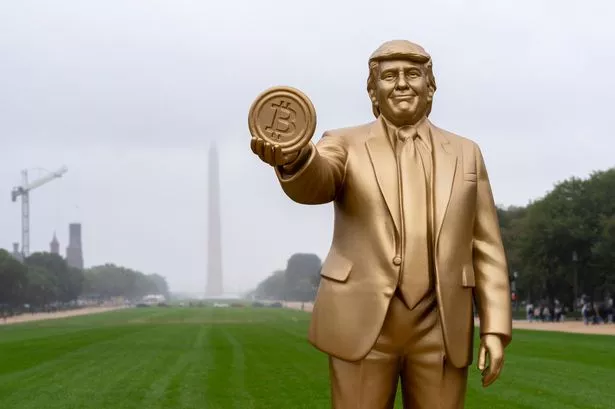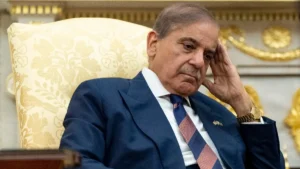![]()
A 12-foot golden statue of former US President Donald Trump holding a Bitcoin has been unveiled outside the US Capitol, drawing crowds and igniting a wave of debate.
The striking statue, funded by a group of cryptocurrency investors, appeared just as the Federal Reserve announced a 25 basis point cut in its key interest rate. Organizers emphasized that the statue is more than just an artwork; it serves as a conversation starter about the growing influence of digital currencies, the shifting direction of monetary policy, and how cryptocurrency is increasingly shaping the global financial landscape.
By associating Trump with Bitcoin, the group sought to spark dialogue on the role of digital assets in the economy and whether they should become more integrated into traditional financial systems.
Supporters of the statue hailed it as a creative representation of Trump’s support for cryptocurrency. Many pointed to his past remarks backing crypto as a signal that such displays could push the US towards broader acceptance of digital currencies. Proponents believe that symbolic acts like this can help elevate public awareness around the ongoing debates about financial innovation.
Not everyone embraced the statue. Critics argued that it oversimplifies the complex issues surrounding markets, regulations, and monetary policy. They warned that reducing such significant debates into symbolic gestures risks ignoring the deeper concerns, including cryptocurrency volatility, risks to consumers, and regulatory challenges.
Despite the controversy, the golden Trump statue has succeeded in capturing widespread attention. Whether one agrees with the message or not, it has undeniably sparked a fresh wave of conversations about cryptocurrency, policy, and the future of money in America.














